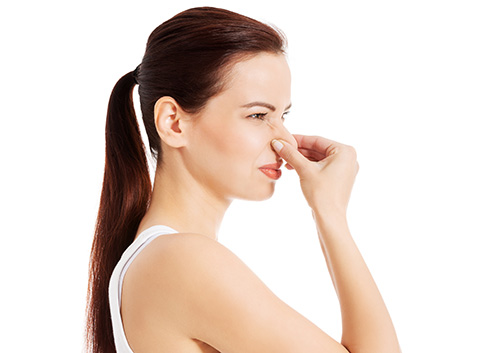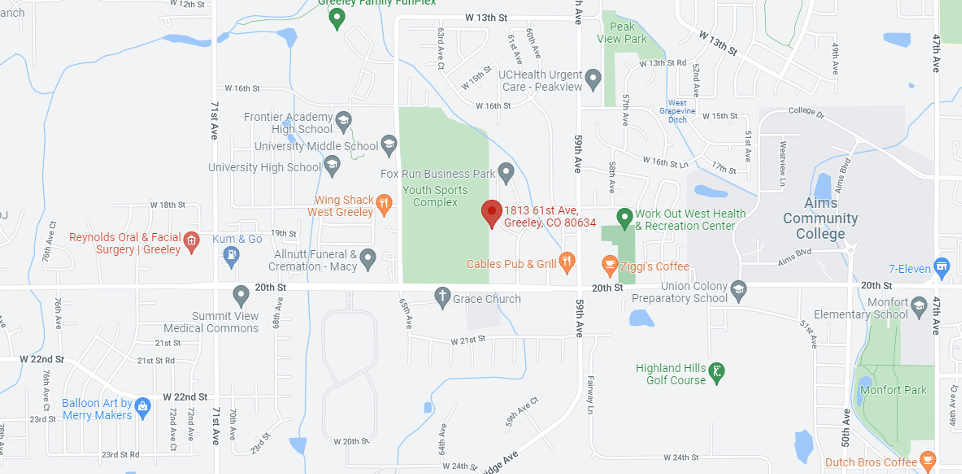August 5th, 2020

Halitosis is the fancy, scientific word for “bad breath.” Drs. Kevin and Kami Marr and our team know there are several reasons why you may have halitosis; let’s look at a few:
- Gum disease (also known as periodontal disease) – There are five main types of gum disease, and each one can range from mild to severe. For example the most common one is gingivitis; it is caused by bacteria in the plaque that has been allowed to build up, usually as a result of poor oral hygiene. A more serious and uncommon type of gum disease is called necrotizing periodontal disease. It is most common in people who have a suppressed immune system.
- Smoking
- Dry Mouth – This can be caused by something as simple as a medication you take.
- Food – Of course, if you eat something that is potent like garlic, it is going to give you bad breath.
- Diseases of the Body – Some diseases such as sinus infections and diabetes, among a few other types of infections, can also cause you to have halitosis.
How to Get Rid of Halitosis
The most obvious answer to how to get rid of halitosis is to practice good oral hygiene, although, depending on the cause of halitosis it may not be that simple. If you have an infection that is causing the halitosis then you may need an antibiotic to clear up the infection and then the bad breath will go away. Here are more tips:
- Brush your teeth after every meal and before bed.
- Floss your teeth. The more plaque you get out of your teeth, the better chance you have of not getting cavities or bad breath.
- Address any medical conditions that are not related to your teeth that can be causing the halitosis.
- Ask Drs. Kevin and Kami Marr for a prescription mouthwash that kills bacteria.
Halitosis (bad breath) can be an embarrassing condition to live with, but there are plenty of ways to get rid of it permanently. Start by talking to a member of our team at our Greeley office.
July 29th, 2020

Your teeth were once naturally white and bright. Wouldn't it be great to keep them that way all of your life? Unfortunately, everyday living can dim our smiles. Food, coffee, some juices, and soft drinks can stain your teeth. Poor brushing and flossing can also leave tooth stains. Injuries to teeth or gums can cause some yellowing as well, and in some cases, medicines can discolor teeth.
So, you may need some extra help to maintain or restore your teeth's natural beauty. Here are some of the best ways to whiten your teeth:
1. Reduce additional staining by drinking with a straw or cutting back on coffee and soft drinks.
2. Brush and floss every day.
3. Try a whitening toothpaste or mouthwash.
4. Visit our office for teeth cleaning and an exam every six months.
We can also help you whiten your teeth with in-office professional teeth whitening at our Greeley office. These whitening products are much more effective than whiteners you can buy at the store and are completely safe. Since they're stronger, application by a member of our team is essential to achieve the best results.
Some teeth can resist bleaching. If that's the case, we can try several techniques:
- Deep bleaching that applies whitening agents over several visits.
- Veneers and bonds that cover existing stains with a whiter, brighter surface.
- Laser whitening that uses light to clean stubborn stains off teeth.
Take Care!
You may come across “bleaching stations” in shopping malls or at fairs. Avoid using these as the so-called whitening techniques can irritate your teeth and gums, leaving them highly sensitive to pain. Note too, that the operators of these whitening stands will make customers apply the bleach themselves, to avoid charges of practicing without a license. That should serve as a red flag and a caution to seek trained professionals, like Drs. Kevin and Kami Marr, instead.
July 22nd, 2020

We turn on the tap and it comes rushing out. We walk down the hall at work or school and stop at the fountain without even thinking about it. It’s the one item on the menu we most likely won’t have to pay for. Let’s face it—we’re probably taking water for granted. So let’s take a moment and look at the many wonderful things that drinking water does for our teeth and dental health!
We can’t always brush right after eating to get rid of food particles. Bacteria feed on the sugars and starches left behind, and produce acids that lead to tooth decay and gum disease. Drinking water with our meals washes away lots of this food residue and dilutes the amount of acid our teeth are exposed to.
Water helps with saliva production, and saliva distributes important minerals such as fluoride and calcium to our teeth. This process helps strengthen enamel that might have been eroded by acidic foods and bacteria and makes our enamel less vulnerable to cavities.
- Preventing Cavities and Dry Mouth
Fluoride is a mineral that strengthens the structure of our teeth. Because so much of our water is fluoridated, you can get this essential mineral with every glass. If you don’t have access to fluoridated water, or if you tend to drink only bottled water (which may or may not have fluoride), please talk to Drs. Kevin and Kami Marr about the best way to strengthen and your teeth and help prevent cavities.
Drinking the recommended amount of water per day also helps prevent dry mouth, a condition caused by decreased saliva production. Saliva not only helps remineralize our teeth, as mentioned above, but also works to wash away bacteria and acids that lead to cavities, gum disease, and bad breath. Luckily, we can help ourselves stay hydrated with most liquids, as well as fruits and vegetables that are rich in water content. But the easiest, most effective and often least expensive way to hydrate is with water.
Water just can’t be taken for granted. It’s a marvel of cleaning, protection, and prevention—and it’s calorie-free!
July 15th, 2020

Temporomandibular joint disorders (TMD) describe a set of conditions that involve trouble with your jaw and face muscles. They result from a problem in the temporomandibular joint (TMJ), which is a hinge that connects the temporal bones, in your skull in front of each ear, to your jaw. The joint enables you to talk, yawn, and chew by letting your mouth move.
TMD can be very painful and interfere with functions such as eating and speaking. This what to watch for and how to try to prevent TMD.
Risk Factors for TMD
You are at higher risk for TMD if you are a women than if you are male. The disorder is most common among adults between the ages of 20 and 40 years. Other risk factors for TMJ disorders include the following.
- Arthritis in the area, making movement more difficult
- Excessive tooth grinding, because it increases stress on the joint
- General stress, which can lead you to clench your teeth and strain facial muscles
Symptoms of TMD
Symptoms of TMD can last for just a short while, or for several years. Seeing Drs. Kevin and Kami Marr is important if your symptoms make it impossible for you to eat regularly or if you have unbearable pain or discomfort. The following symptoms can occur on both or one side of your face.
- Aching or very tired facial muscles
- Jaws that are fixed open or shut without you being able to unlock them
- Grating or popping sounds when you chew or close or open your mouth
- Pain in the entire area, including the mouth, jaw, neck, or shoulders, that comes on when you chew or yawn
Preventing TMD
You can try to prevent TMD by focusing on reducing risk factors. If you grind your teeth at night, ask Drs. Kevin and Kami Marr about wearing a mouthguard. If you are overly stressed, look into ways to better manage your stress and relax your muscles. Another strategy for trying to prevent the development of TMD is to avoid chewing gum, since that puts stress on your jaw.
If you have questions about TMD, don’t hesitate to contact our Greeley office.




